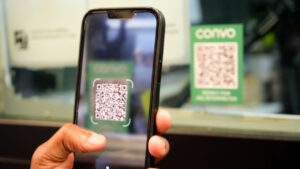For National Disability Employment Awareness Month, we’re all about advancing employment opportunities for Deaf people. According to National Deaf Center’s report (2019), only 53% of Deaf people are employed, compared to their hearing counterparts (76%). Nearly half of the entire Deaf population has no job. It could be because of discrimination they’re experiencing in employment hiring. What are common misconceptions that employment hiring practices for the Deaf may look like? Here are five myths you may want to learn about.
Myth 1: Deaf people should provide their own interpreters.
False. This violates the federal Americans with Disabilities Act law. Businesses are required to provide a sign language interpreter if a Deaf person requests one to ensure that they have equal access to services and opportunities, including employment. If you’re not sure where to start looking for an interpreter, you can ask them for interpreter recommendations to find out qualified interpreters that work for everyone.
To learn more about communication rights for the Deaf, check out our blog post here.
Myth 2: If a sign language interpreter is certified, then they can interpret in any setting.
That’s not true. Did you know that different certifications prove your knowledge and expertise in a specialized field of interpreting? If you need a sign language interpreter for a medical setting, you’d be best to use an interpreter with knowledge and expertise in the medical field. If you were to have a certified sign language interpreter that’s not appropriately qualified to interpret in a specialized setting, it could lead to confusion and frustration for the Deaf person due to complex jargon that may be difficult to be interpreted effectively. If you get a sign language interpreter that’s more experienced in a specific field, they’ll be more seasoned and prepared to deliver the message more effectively.

Myth 3: One sign language interpreter is enough for any event.
Hiring two interpreters instead of one can enhance the quality and effectiveness of your event’s interpretation. At most events that provide sign language interpretation, you’ll find a team of two interpreters. Sign language interpreting requires a lot of mental effort, and the quality of work for an interpreter can suffer after 30 to 45 minutes. If your event is longer than an hour, it is best practice to hire a team of two interpreters to ensure the full effectiveness of the interpretation.
If you anticipate your job interview with the Deaf applicant or work meetings that include Deaf employees will last for a while, then we highly recommend you hire two interpreters.
Myth 4: Communicating through text or writing back and forth on paper is as effective as having an interpreter.
This is a popular misconception. ASL and English have vastly different grammatical structures and rules, and a lot of Deaf people grew up using ASL as their native and primary language. They may not be accustomed to understanding complex structures of English because it’s not their native language (similar to someone fluent in English trying to learn Spanish for the first time). Communicating through text or writing on paper may be effective, especially when it’s to exchange negligible information, such as making a specific order in a fast-food restaurant or asking to find an item in a supermarket, because the information being shared is simple and direct. When it comes to providing services that require extensive support, such as medical care, having an ASL interpreter is paramount because Deaf clients will get full and thorough access to the information they need to make informed choices for themselves.
Did you know that we offer free virtual interpreting services for all your job interviews with Deaf applicants when you sign up with us? Send us an email at sales@convorelay.com to learn more!

Myth 5: If I provide sign language interpreters for Deaf clients, I won’t need to provide captions.
This is a myth. The Deaf community is rich in linguistic diversity. Some Deaf folks rely on written English, and some prefer to watch ASL interpreters. Additionally, your event likely has participants who have not requested accommodations but actually do have a need for them. According to the NIDCD, “About 2 percent of adults aged 45 to 54 have disabling hearing loss. The rate increases to 8.5 percent for adults aged 55 to 64. Nearly 25 percent of those aged 65 to 74 and 50 percent of those who are 75 and older have disabling hearing loss.” This means that of these individuals, less than one-third have used hearing aids (due to cost and lack of awareness). Just one accommodation request may wind up making the event inclusive to many others, unbeknownst to you.
When providing accommodations, just ask the Deaf person what works best for them!
Let’s make employment more inclusive for the Deaf community!
Our philosophy revolves around the idea that every Deaf caller has ownership over all of their calls. Our approach is creating authentic interpreting that grants Deaf individuals control over when and how conversations happen, so they can fully participate and self-advocate. As the largest Deaf-owned business in the world, we understand the uniqueness of individualized Deaf communication preferences and the importance of a simple and efficient connection to a trustworthy interpreter. This is how we ignite true inclusion of accessibility that feels right for everyone. Learn more about our ASL interpreting services.





